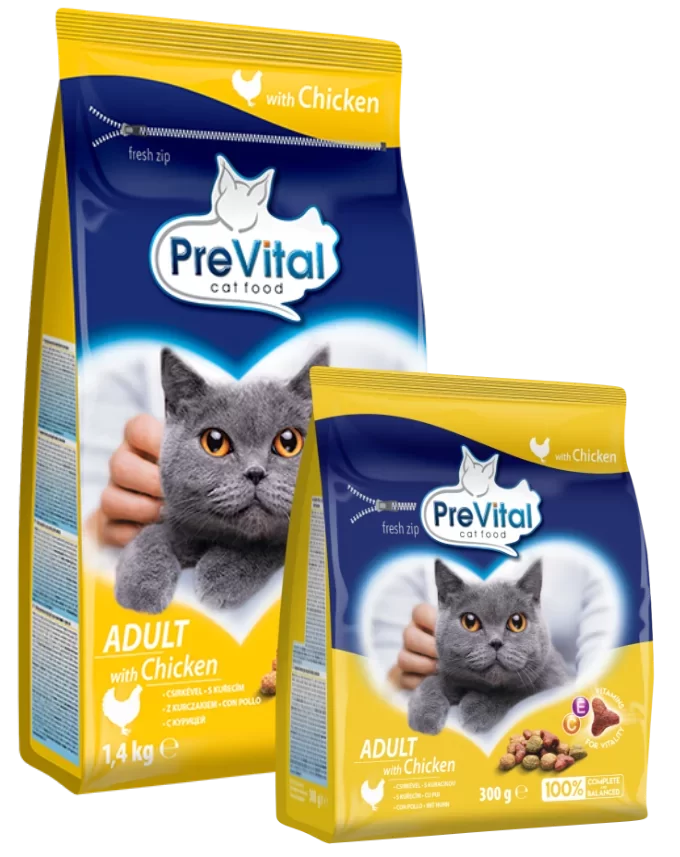PreVital
Adult Chicken
Adult
Regular
Indoor and Outdoor
Click to reveal the score breakdown
Tap to view ingredients, guaranteed analysis and more
Ingredients
Cereals
Meat and animal derivatives (17%; of which 4% chicken in green, orange and natural kibbles),
Vegetable protein extracts
Oils and fats
Yeast
2.5%
Derivatives of vegetable origin (2% beet pulp)
Minerals
Vegetables (1% dried peas equivalent to 4% peas in green, orange and natural kibbles)
Mixing ratio: 40% red, 40% natural, 10% orange and 10% green.
Vitamins and Additives
Vitamin A 12000 IU
Vitamin C 55 mg
Vitamin D3 1200 IU
Vitamin E 245 mg
and also:
Copper (as Copper (II) sulphate, pentahydrate) (17mg), Iron (as Iron (II) sulphate, monohydrate) (128mg), Iodine (as Calcium iodate, anhydrous) (3.4mg), Zinc (as Zinc sulphate, monohydrate) (130mg), Manganese (as Manganese (II) oxide) (18mg), Selenium (as Sodium selenite) (0.35mg), Taurine (1500mg), Antioxidants and colorants
Comments
Guaranteed Analysis
Crude Protein
30%
Crude Fat
12%
Crude Fiber
3%
Crude Ash
7%
Omega 6
2.05%
Product last updated: June 16, 2023, 10:00 AM
Please hold on while we’re getting the best offers for you
6807



